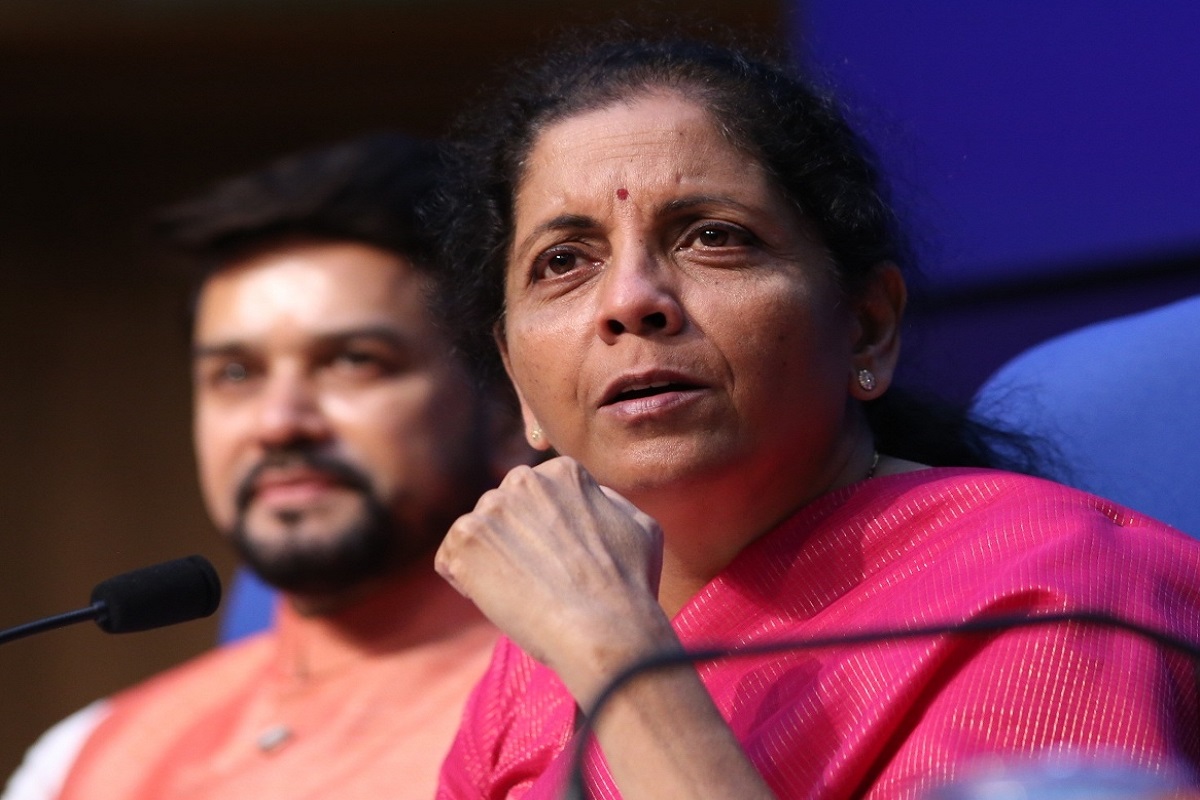Is finance minister Nirmala Sitharaman’s decision to restrict entry of journalists into North Block a trial balloon to fence off all government offices from the prying eyes of the media? Many journalists fear that the finance ministry ban on the media will soon spread to other ministries and effectively cut off information flow about the Modi government.
Media organisations have lodged a strong protest against the finance ministry decision. The issue figured in the Rajya Sabha too where opposition leaders spoke up for press freedom.
The finance ministry traditionally locks its doors to the media one month before the budget is presented to prevent possible leaks from this much awaited pronouncement of the government’s annual fiscal and economic policy. The ban on the media is lifted as soon as the budget is presented in Parliament.
The new dispensation under Sitharaman, however, has decided to continue with the restrictions. The norms have only been eased to allow journalists into North Block if they have prior appointments with an official. But with bureaucrats being closely monitored for any interaction with the press, most officers are scared to give appointments.
In practice, this amounts to a gag order as financial journalists can no longer meet officials. Traditionally, correspondents accredited with the Press Information Bureau can enter any ministry with their PIB card. While the Information and Broadcasting ministry has promised to look into the issue, there is concern in the media that this could be the start of a process of informal censorship.
Still too whipped
The Congress is in such disarray after Rahul Gandhi quit as party president that it has been unable to attend to the most mundane of tasks. For instance, Jyotiraditya Scindia’s name plate has only just been removed from outside the party office in Parliament.
Scindia was the chief whip in the Lok Sabha but he lost the election this time. Yet, the name plate describing him as chief whip in the Lok Sabha has been hanging on the wall since the budget session began. It’s taken three weeks and several critical tweets for someone in the Congress to wake up and rectify the error. Curiously, the name plate of the new chief whip, K Suresh, has not been put up yet. Obviously, someone has belatedly realized that a name plate has to be readied for Scindia’s successor.
Newbies kept happy
The BJP is going out of its way to keep new entrants from other parties happy. Former TDP Rajya Sabha MP now with the BJP, C M Ramesh, was recently appointed member of the Public Accounts Committee from the BJP quota of three in the Upper House.
Ramesh was a PAC member earlier, but as a TDP representative. When the committee was being reconstituted, Ramesh requested his new party to put him on the committee. The BJP leadership obliged.
The other two BJP members from the Rajya Sabha are Bhupinder Yadav and Rajeev Chandrasekharan. It’s quite a feather in the cap for Ramesh to be nominated to a parliamentary committee by his new party so soon after joining it. Clearly, the BJP does not want new entrants to feel unhappy in any way.
The BJP’s oracle
Sports minister Kirren Rijiju claims to be an oracle for correctly predicting BJP victories in elections.
He has been reminding everyone that in the final session of Parliament before the Lok Sabha polls, he had said that the BJP would win between 301 and 303 seats. He was quite specific about the numbers and insisted that media persons present should make a note for a comparison later, after the results are announced. Well, Rijiju was very, very close. In fact, he was more accurate than railways minister Piyush Goyal who had announced at a public function before the polls that the BJP would get between 297 and 303 seats.
Rijiju maintains that he was bang on target about the UP assembly election results of 2017 as well. That time, he had predicted that his party would bag 310- 312 seats. It won 312.
The minister has told people that his amazingly accurate forecast was based on his political sense and assessment of the ground situation. Given his track record, political circles are agog with anticipation about his prediction for the upcoming assembly polls in Maharashtra, Haryana and Jharkhand. He is believed to have promised a forecast once the polls are announced.
Waiting for a prompt
Congress MP from West Bengal Adhir Ranjan Chowdhury is his party’s floor leader in the Lok Sabha. But he is always looking to Sonia Gandhi and Rahul for directions on what to say and do.
For instance, when the party first raised the Karnataka crisis in the Lok Sabha, Chowdhury didn’t dare ask party MPs to walk out without getting the nod from either Sonia or Rahul. It was only when DMK MPs walked out on the NEET issues that Chowdhury got the green signal to lead his party out of the House.
Significantly, although the Trinamool Congress has a longstanding feud with Chowdhury, it decided to bury the hatchet for the moment on the Karnataka crisis. TMC MPs walked out along with the Congress the next time the issue was raised in the Lok Sabha.











